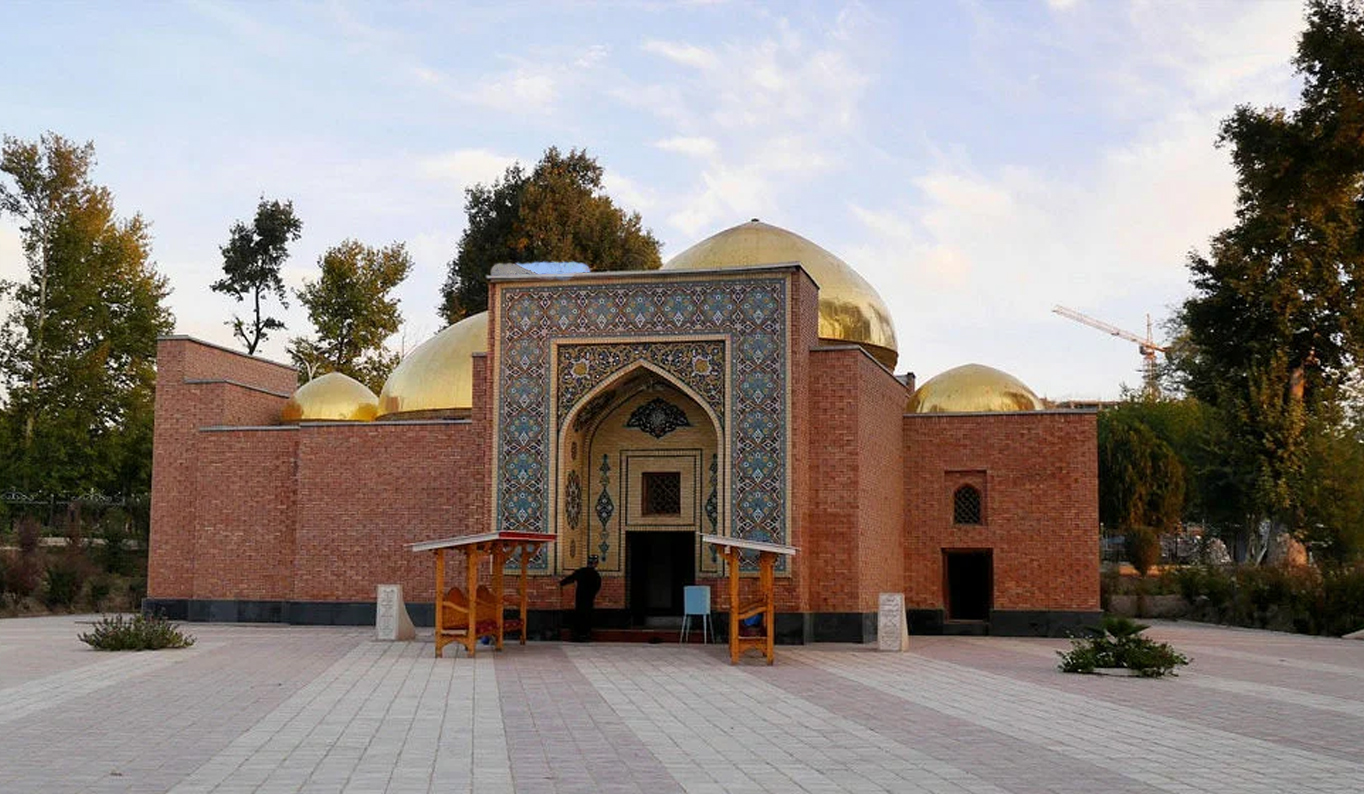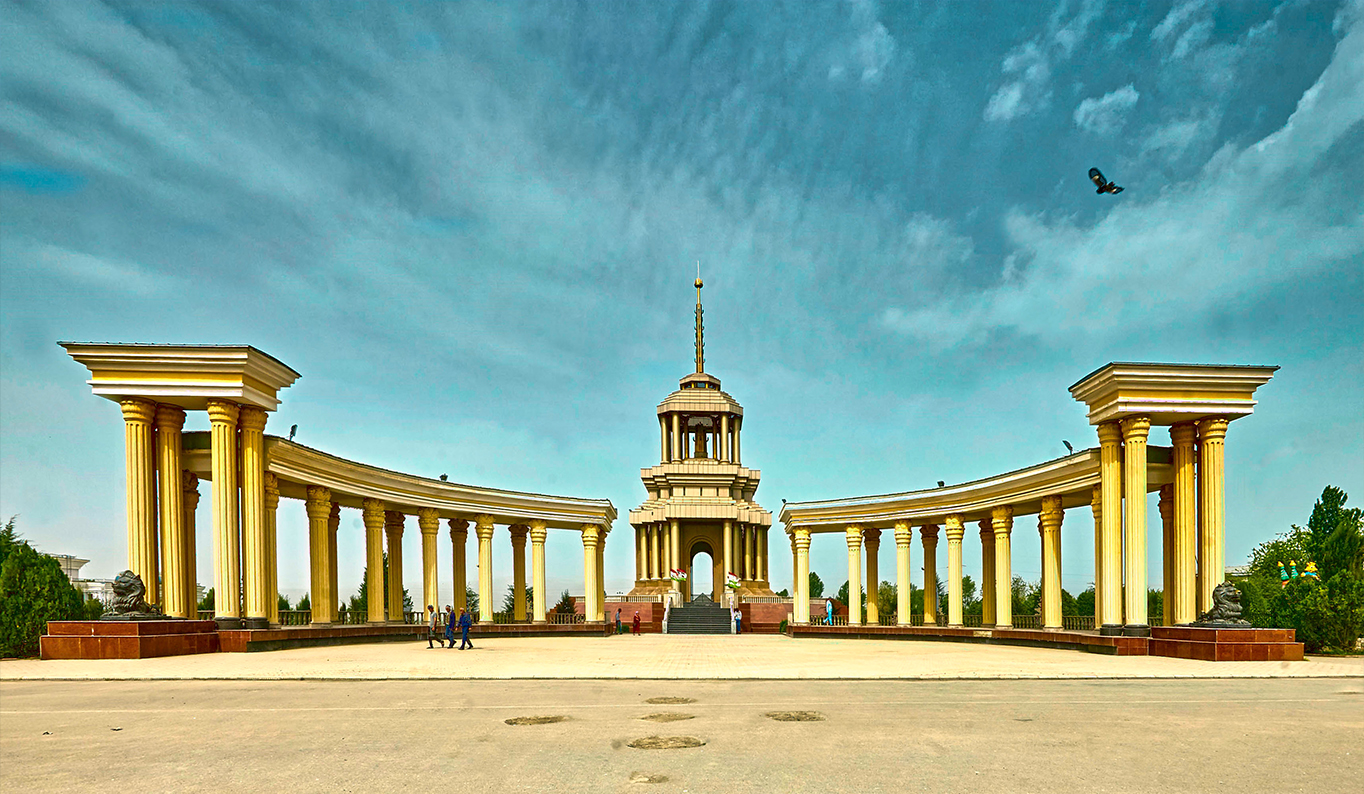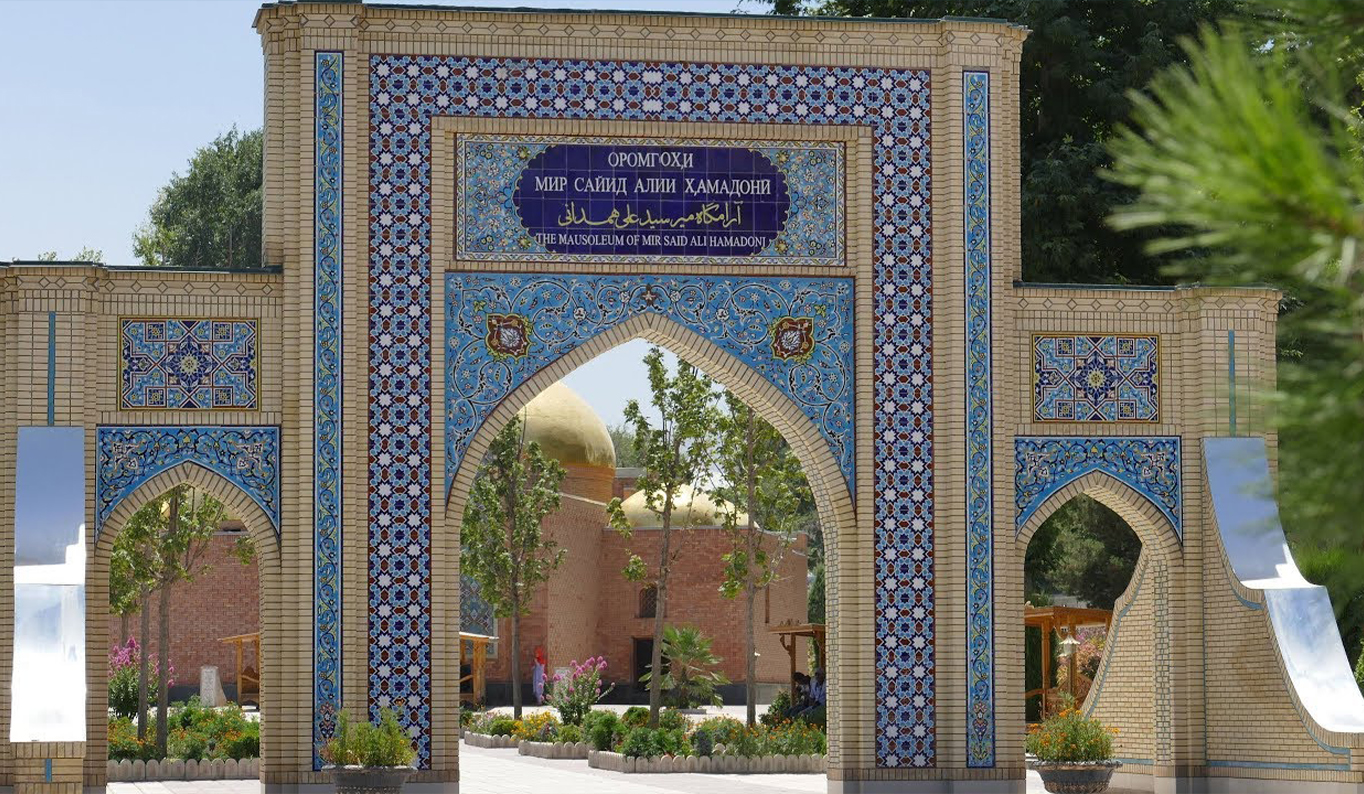Kulyab city, breathing history
Kulob, Khatlon, Tajikistan,
My region, wonderful gulistan!
There`s no dearer than you,
Let there be a happy way!
Galia Haliullova
... One might as well to become a mystic. Everything that is connected with Kulyabis is kindly linked with the name of Mir Sayyid Hamadoni whose mausoleum with the burial place has been protecting Kulyabis from all evil and misfortune for many centuries as talisman.
From an article "Narodnaya Gazeta"
Most part of his life was spent traveling to different countries of the East, which gave him the opportunity to carry not only light and good in the soul of everyone he met on his way, but to preach the science, culture and the Islamic religion, and himself, in turn, learnt lifestyle, rituals and traditions of the peoples of other countries. The journey of his life came to the end on the way to the little town of Ka-bravsavod Pohl (Pakistan), bequeathed to his disciples and followers to bury his body to the soil of Huttalyan, current Tajik Kulyab. Sometime later a mausoleum was erected over his tomb, which became the central composition of the modern city of Kulob and place of worship for many pilgrims - Mir Sayyid Ali Hamadoni (1314 - 1384).
According to some sources the name of "Kul-ob» translated from Farsi means "water lake ", and according to legends, means the valley area Kyzylsu rivers and Yakhsu, which flooded the Panj River, and as result an enormous water reservoir appeared which gave the name of the entire neighborhood.
The modern Tajik Kulyab, acquired city status in 1934, is located at the foot of the Hazratishoh ridge in the valley Yakhsu River, 114 km from Dushanbe and 182 km on the highway route. City status gave Kulyab not only pride, but also gave plenty of opportunities, turning it into a modern industrial metropolis. The agriculture developed rapidly due to the emergence of a number of plants and factories (ginning, flour, meat, etc.), the construction sector, and cattle breeding. The caravan roads which were made since the days of the Silk Road existed here until 1917 were replaced by modern highways, which connected all the localities of the current Khatlon and other areas. New hospitals, pharmacies, health centers and schools were built rapidly. In parallel, the handicraft developed - carvings, jewelry, ceramics, embroidery, stone processing, which inhabitants of the area were engaged long time ago.
Old-timers say that Kulyab deserves this blossoming because it suffered a lot on its historical path. These hostile neighbors, the rulers of the Uzbek khanate Kunduz, Kokand and Bukhara, alternately captured Kulyab in the XIX century, and internecine warfare, the invasion of foreigners from the country Sheibanids in the XVI century, and a century-old rule and climatic conditions that has turned Central Asia into the arena of bloody wars of individual feudal groups. Despite the fact that according to the historical work "Abdullah-name", was a small town, Kulyab used to defend themselves but as the new capital Huttalyan, a fortified castle with three gates: Char (on the north side), the Imam (in the west) and the Darb al-Hai Van (in the south). The eastern part was protected by the mountains.
In the medieval the city was not only a center of Kulyab bekstva of Bukhara khanate, but also an important political, economic and cultural center. A large number of maktabs (primary schools) and madrasahs (higher education institutions) functioned there. And in the XVII-XIX centuries Kulyab has become a haven of poets.
According to the historical data, during the bekstva of Kulyab about 19 Beks lived temporarily in summers until 1905, for 28 years, and migrated to other cities. Nothing memorable has left any one - there were no new structures, no new roads - all remained in a form in which inherited from the previous rulers. Perhaps that is why so firmly and clearly was the memory of an unusually wise thinker Mir Sayyid Ali Hamadoni, whose spirit is invisibly present in the region at every stage of its existence, and who in his lifetime while maintaining a fair and skillful power demanded padishahs and rulers constantly assist and protect the interests of the working people, the poor and weak one.
Decades later, the name of Hamadoni again entered the arena unexpectedly. In 1993 Kulabi people kindly decided to celebrate the 680 anniversary of the thinker, whose mausoleum is considered to be not only a landmark, but also a kind talisman of Kulyabi people. The excavations were held by the Ukrainian historian and a qualified archaeologist, Peter Samoilenko. As a result he fortunately found out the age of the furnace which was almost 2700 years old, and it became the eyewitness that Kulyab was much older than he previously thought. But about the discovery and its announcement was concealed because it was not the right time, there was a civil war in the country. The mystery of the mausoleum was opened after 10 years, in 2002. And on September 9, 2006 Kulob solemnly celebrated the 2700th anniversary.
At the time of celebration Kulyab not only turned into a garden city, but also significantly improved the infrastructure, exploited the station of emergency care with 20 beds, a multidisciplinary hospital with a cancer center, 2 secondary schools with 1928 places in total, 9-storey apartment house, national tea-house with 100 seats, sport ground in the city park, the fountain complex in parks and squares, built a new market, the library and the house of marriage, and many others etc. But the most important thing was the mausoleum Hamadoni, the hero of the scene, has been reconstructed and decorated with the national wood carving.
New attractions appeared in the city for instance, a memorial complex of "the 2700 anniversary of Kulob", consisting of a colonnade with a spire of 50 meters, the museum of history and parkland. For the construction of the memorial work builders of Tajikistan, masters from China and Russia were engaged. For the construction of columns and spire symbolizing the tree of life of the Tajik people, spent 8 kg of gold leaf, and the historical museum has found a shelter to the same kiln porcelain, which was found in 1993.
Nowadays Kulob is not just an ancient city, but also the birthplace of the traditional Tajik dress with hand-embroidered - Chakan, introduced in 2018 in the UNESCO Cultural Heritage List, silver jewelry with national patterns, delicious cakes and traditional Eastern hospitality, typical of the entire Tajik world. You will always be allowed to stay, even if there is no money, feed and drink a cup of green tea for the health of our dear guest.




Leave a comment